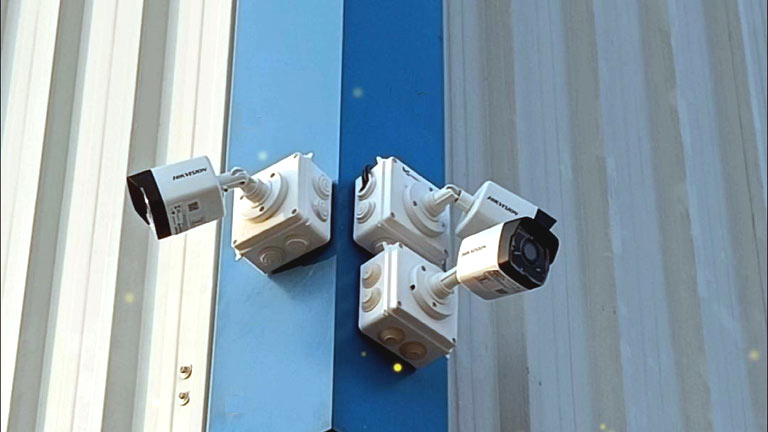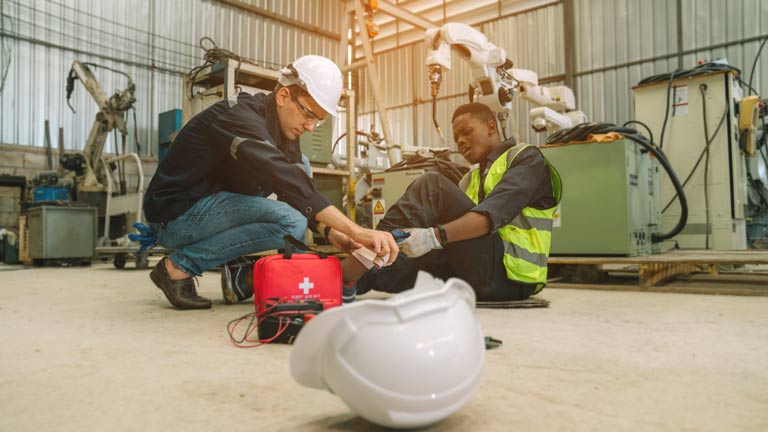
Home CCTV cameras play a crucial role in safeguarding properties and providing peace of mind. Proper camera placement is essential to maximise their effectiveness.
What the statistics say
The Office for National Statistics compiles data on crime in England and Wales. Here are some key facts drawn from it that homeowners need to know.
There are about 400,000 burglaries a year, and about 40% of them happen in residential properties. Most home burglaries happen during the week, particularly on Mondays. The most common time for home burglaries is between 10 AM and 3 PM.
Most home burglars gain entry through the front door (70%). Around a third of them gain entry through a window (30%).
Despite their frequency, only 13% of reported burglary cases result in a suspect being identified and charged. Effectively, therefore, the onus is very much on homeowners to protect themselves rather than rely on the police.
The Role of CCTV
Like most forms of security, CCTV’s main purpose is to deter people from committing a crime in the first place. This means that the most effective way to use it is in combination with a monitoring and/or alarm system. The CCTV detects the activity and alerts a human to it. The human then decides what action to take.
Catching a burglar after the event is really only the fallback option. It is, however, still a lot better than nothing. Technically, burglars can hide their faces from the cameras. Practically, this is harder than it sounds, particularly if you need to avoid drawing attention to yourself.
In either case, however, CCTV cameras will only work effectively if you choose the right camera for the right location and install it in the right way. To explain further, ISET UK, specialist security suppliers, share their expertise on the importance of CCTV cameras and what you should consider when placing them to ensure maximum coverage and, hence, security. Here are the key points to keep in mind.
General considerations
High vantage points provide significant advantages when it comes to placing CCTV cameras. By positioning cameras at elevated locations, such as the upper levels of a building or on tall poles, homeowners can enjoy enhanced surveillance coverage and better identification of individuals. The elevated placement allows cameras to capture a wider field of view, maximising their effectiveness in monitoring larger areas.
From a high vantage point, cameras can effectively oversee entry points, such as doors and windows, as well as broader areas like driveways and yards. This positioning offers a comprehensive view and enables the cameras to capture important details, such as facial features or licence plate numbers, with greater clarity. It also acts as a deterrent, as potential intruders are more likely to notice cameras placed at higher locations, discouraging them from attempting a break-in.
Beware of blind spots
Blind spots are areas where cameras may have limited visibility, such as corners or secluded sections of the property. It is essential to identify these areas and ensure they are adequately monitored. By compensating for blind spots, homeowners can eliminate potential vulnerabilities in their security systems.
To address blind spots, additional cameras can be installed strategically. By strategically placing cameras in these areas, homeowners can ensure comprehensive coverage and eliminate potential hiding spots for intruders.
Alternatively, adjusting the angles of existing cameras or using cameras with pan-tilt-zoom (PTZ) capabilities can help cover blind spots without the need for extra cameras. PTZ cameras allow for remote control of the camera’s movement and zoom, providing flexibility in monitoring different areas.
Make adjustments as necessary
Regular evaluation and adjustment of camera angles may be necessary to maintain optimal coverage and minimise blind spots. Homeowners should periodically review their camera placement, considering factors such as landscaping changes, construction modifications, or new objects that may obstruct the camera’s field of view.
Entry points
Front and back doors are vulnerable access points for burglars due to their direct connection to the interior of the house. These doors are typically the primary means of entry for both residents and guests, making them attractive targets for intruders. By strategically placing cameras to monitor these areas, homeowners can significantly enhance their security.
Visible cameras placed near front and back doors serve as a powerful deterrent. The presence of CCTV cameras acts as a warning to potential burglars that the property is under surveillance, greatly reducing the likelihood of an attempted break-in. Even the sight of cameras can discourage criminals from targeting a home and prompt them to move on to a less protected target.
Ground-level windows are another common entry point for burglars. These windows are often easier to access and provide an alternative means of entry when doors are secured. Placing cameras to monitor vulnerable ground-level windows is essential for comprehensive home security.
Perimeter coverage
Driveways and garages are essential areas to monitor as they provide access to vehicles and can serve as potential break-in points. By placing cameras to cover these areas, homeowners can keep a watchful eye on their vehicles, deterring theft and vandalism. Additionally, monitoring the driveway can provide valuable information about any suspicious activity or individuals approaching the property.
Outdoor cameras with wide-angle lenses are particularly useful for monitoring driveways and garages. These lenses offer a broader field of view, enabling cameras to capture a larger area. Wide-angle lenses can help in identifying vehicles, licence plates, and individuals at a distance, increasing the chances of detecting potential threats.
Side entrances and back gardens often offer concealment to intruders, making them attractive areas for unauthorised access. It is therefore essential to have cameras positioned to monitor these areas too.
Using CCTV cameras indoors
When creating a robust security ecosystem, it’s best to assume that each layer of your defence can and will be breached. In other words, assume that burglars will find a way around your outdoor security defences and place further defences indoors.
Keep in mind that burglars are likely to be well aware of the fact that many people now work remotely, at least some of the time. This means that you could be targeted for work-related assets (such as data) as well as your personal assets.
Installing cameras in key areas such as home offices and bedrooms (where jewellery is often stored) can provide an effective last line of defence. For maximum protection, supplement the cameras with other security measures such as door/window sensors, motion detectors, and access control systems.




